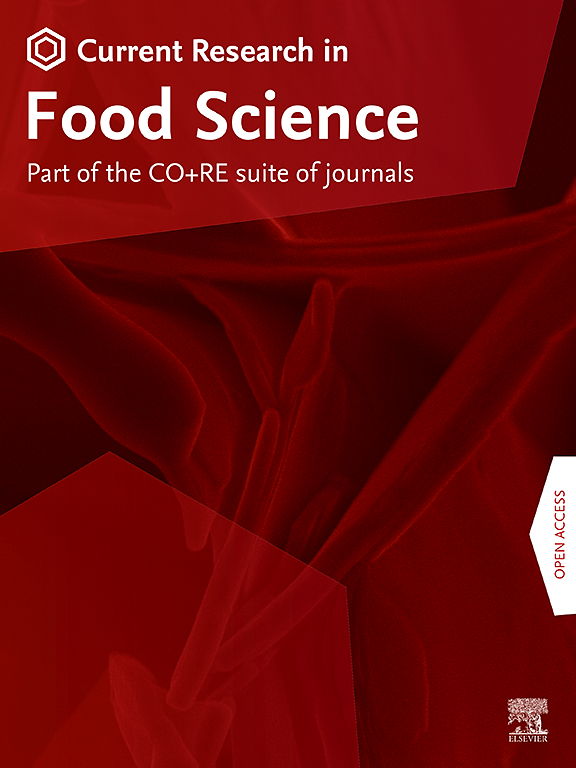Non-volatile and volatile metabolite analyses and objective quantitative technique reveal the effect of fixation methods on the flavor quality and metabolites of green tea
IF 6.2
2区 农林科学
Q1 FOOD SCIENCE & TECHNOLOGY
引用次数: 0
Abstract
Fixation methodology serves as the critical determinant in shaping green tea's multi-dimensional quality attributes; however, the impact of different fixation methods and the corresponding combinations on the overall metabolites and quality of in green tea remains unclear. In this study, non-volatile metabolites (NVMs) and volatile metabolites (VMs) analyses and objective quantitative techniques were used to determine the effects of electromagnetic roller-hot air coupling fixation (ROHF), electromagnetic roller-steam coupling fixation (ROSF), electromagnetic roller-hot air-steam coupling fixation (RHSF), electromagnetic single roller fixation (ROLF), and carding fixation (CDF) on the quality of green tea. Forty-four NVMs, 99 VMs, and 15 flavor objective quantitative indexes were identified, with 12 differential NVMs and 9 differential VMs statistically screened. The green tea processed via ROLF was lustrous and emerald green with a bright and clear liquor; ROSF resulted in low caffeine and flavonoid glycosides contents and an umami (UMS) taste; and RHSF was associated with high trans-β-ionone, hexanal and 1-octen-3-ol levels, with a floral and fresh aroma. These findings provide a precise control scheme for the customized processing of green tea, and promote the upgrading of traditional fixation process to intelligent standardization.

非挥发性、挥发性代谢物分析和客观定量技术揭示了固定方法对绿茶风味品质和代谢物的影响
固定方法是塑造绿茶多维品质属性的关键决定因素;然而,不同固定方法及其组合对绿茶整体代谢产物和品质的影响尚不清楚。本研究采用非挥发性代谢物(NVMs)和挥发性代谢物(VMs)分析和客观定量技术,确定了电磁滚子-热风耦合固定(ROHF)、电磁滚子-蒸汽耦合固定(ROSF)、电磁滚子-热风-蒸汽耦合固定(RHSF)、电磁单滚子固定(ROLF)和梳理固定(CDF)对绿茶品质的影响。共鉴定出44个nvm、99个vm和15个风味客观定量指标,统计筛选出12个差异性nvm和9个差异性vm。经ROLF加工的绿茶色泽翠绿,汤液清澈明亮;ROSF使其咖啡因和类黄酮苷含量低,口感鲜味;RHSF具有较高的反式β-离子酮、己醛和1-辛醛-3-醇含量,具有花香和清新的香气。研究结果为绿茶定制加工提供了精确的控制方案,促进了传统固定工艺向智能化标准化的升级。
本文章由计算机程序翻译,如有差异,请以英文原文为准。
求助全文
约1分钟内获得全文
求助全文
来源期刊

Current Research in Food Science
Agricultural and Biological Sciences-Food Science
CiteScore
7.40
自引率
3.20%
发文量
232
审稿时长
84 days
期刊介绍:
Current Research in Food Science is an international peer-reviewed journal dedicated to advancing the breadth of knowledge in the field of food science. It serves as a platform for publishing original research articles and short communications that encompass a wide array of topics, including food chemistry, physics, microbiology, nutrition, nutraceuticals, process and package engineering, materials science, food sustainability, and food security. By covering these diverse areas, the journal aims to provide a comprehensive source of the latest scientific findings and technological advancements that are shaping the future of the food industry. The journal's scope is designed to address the multidisciplinary nature of food science, reflecting its commitment to promoting innovation and ensuring the safety and quality of the food supply.
 求助内容:
求助内容: 应助结果提醒方式:
应助结果提醒方式:


